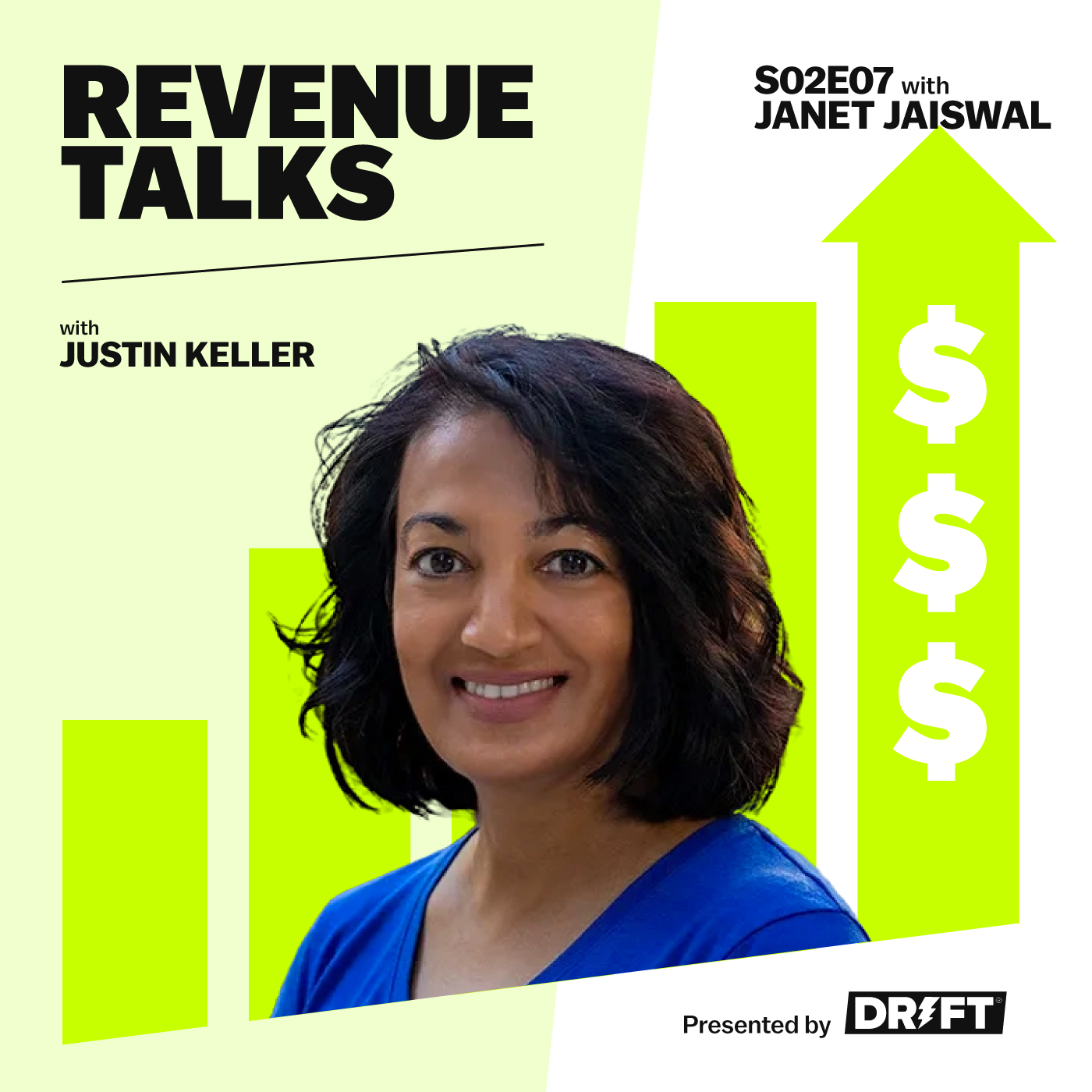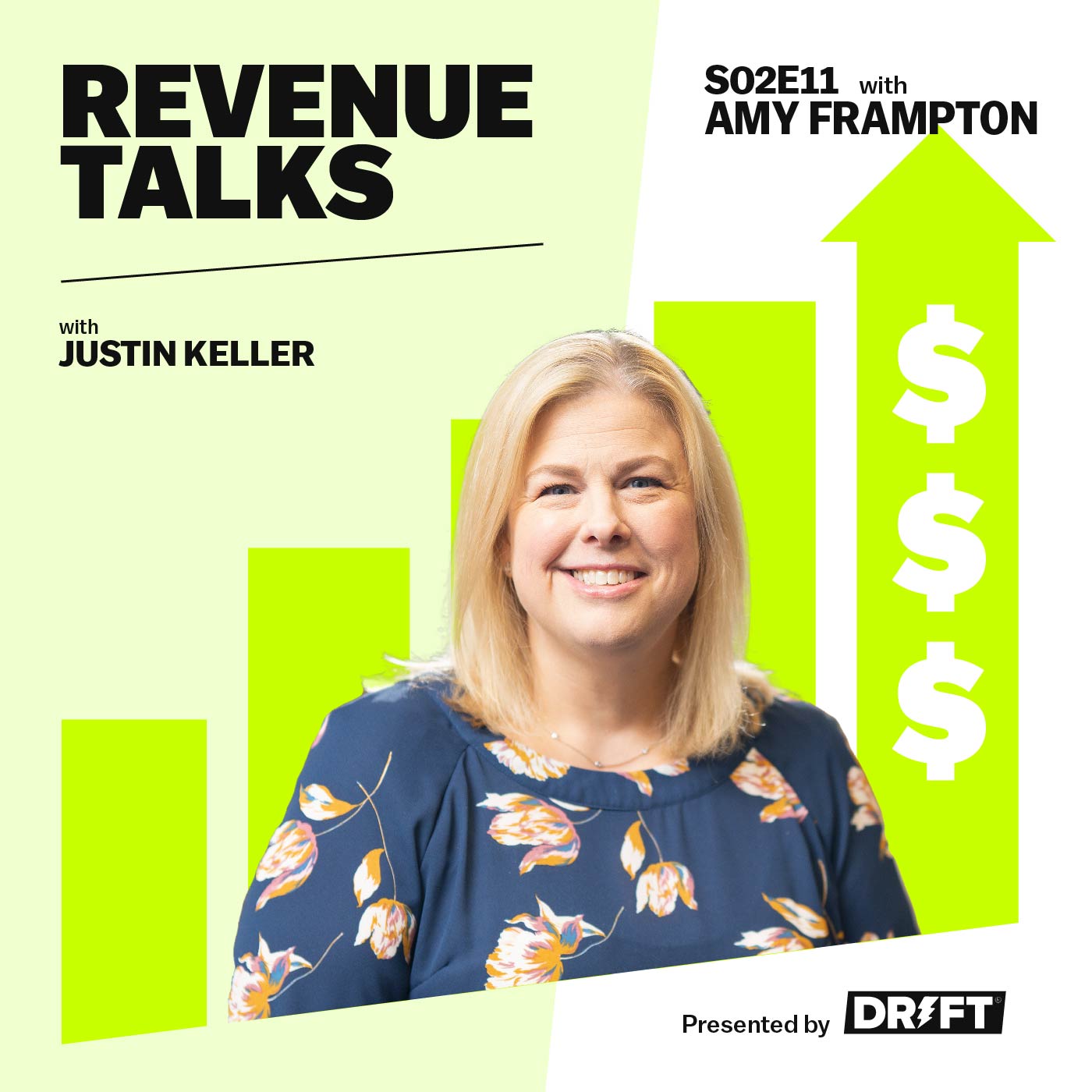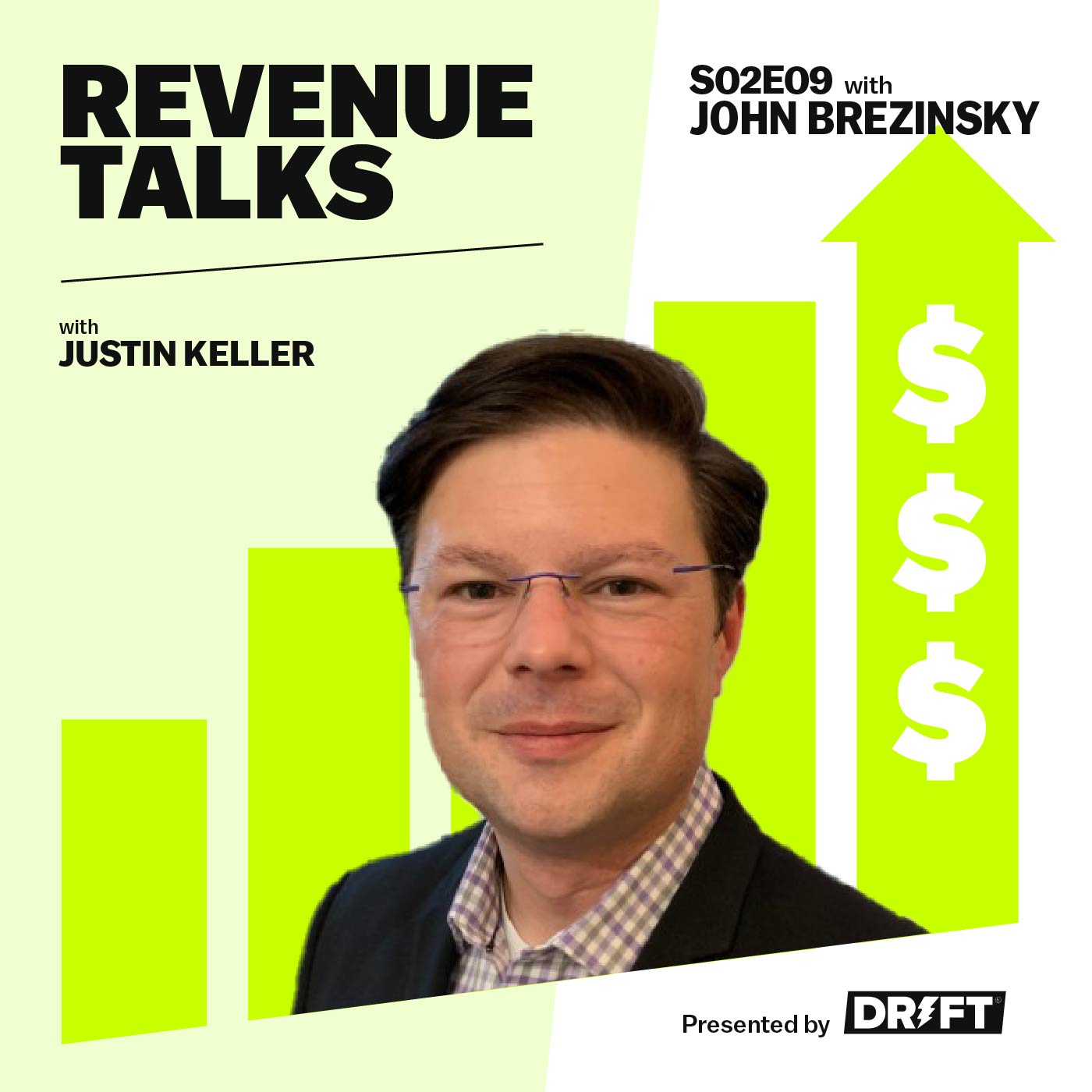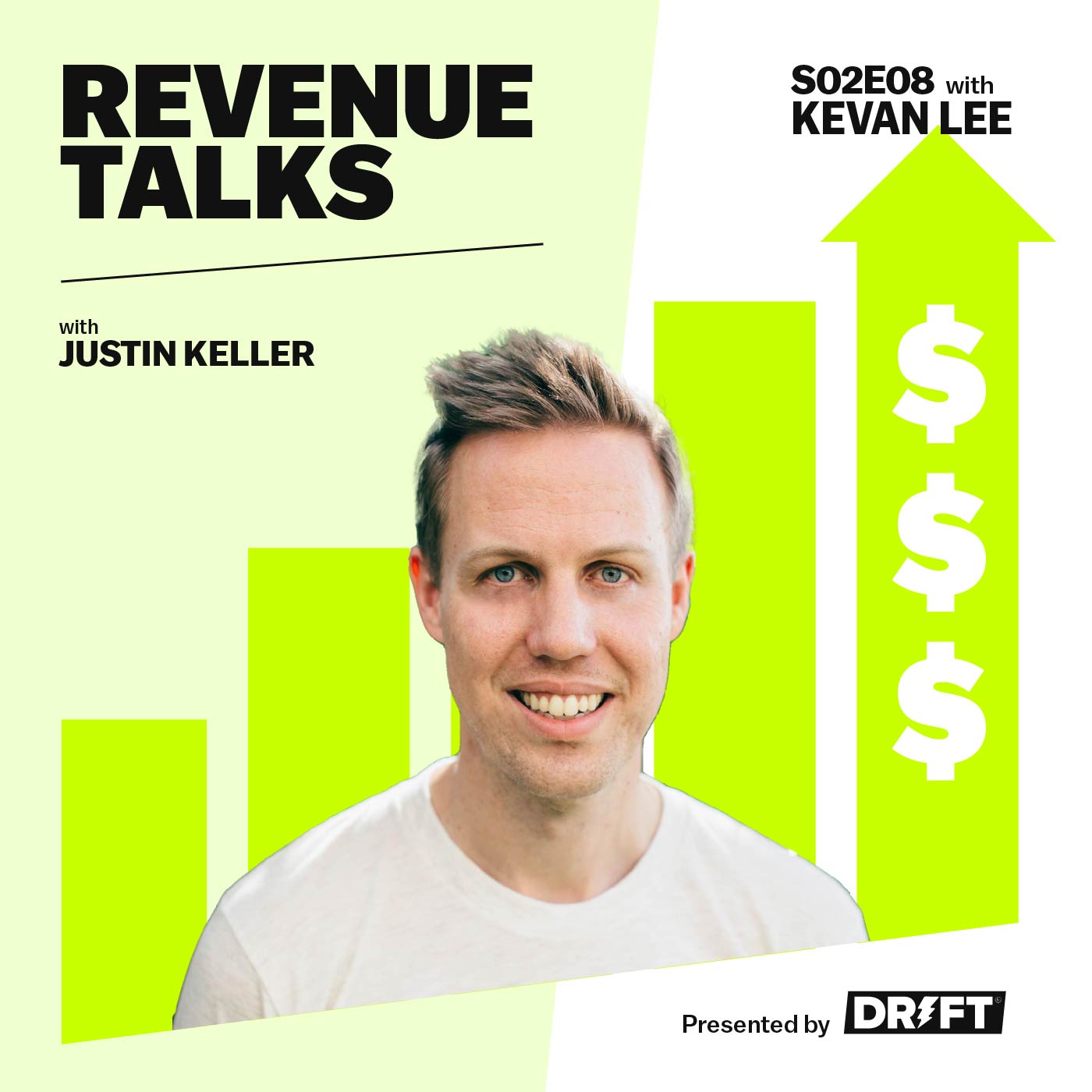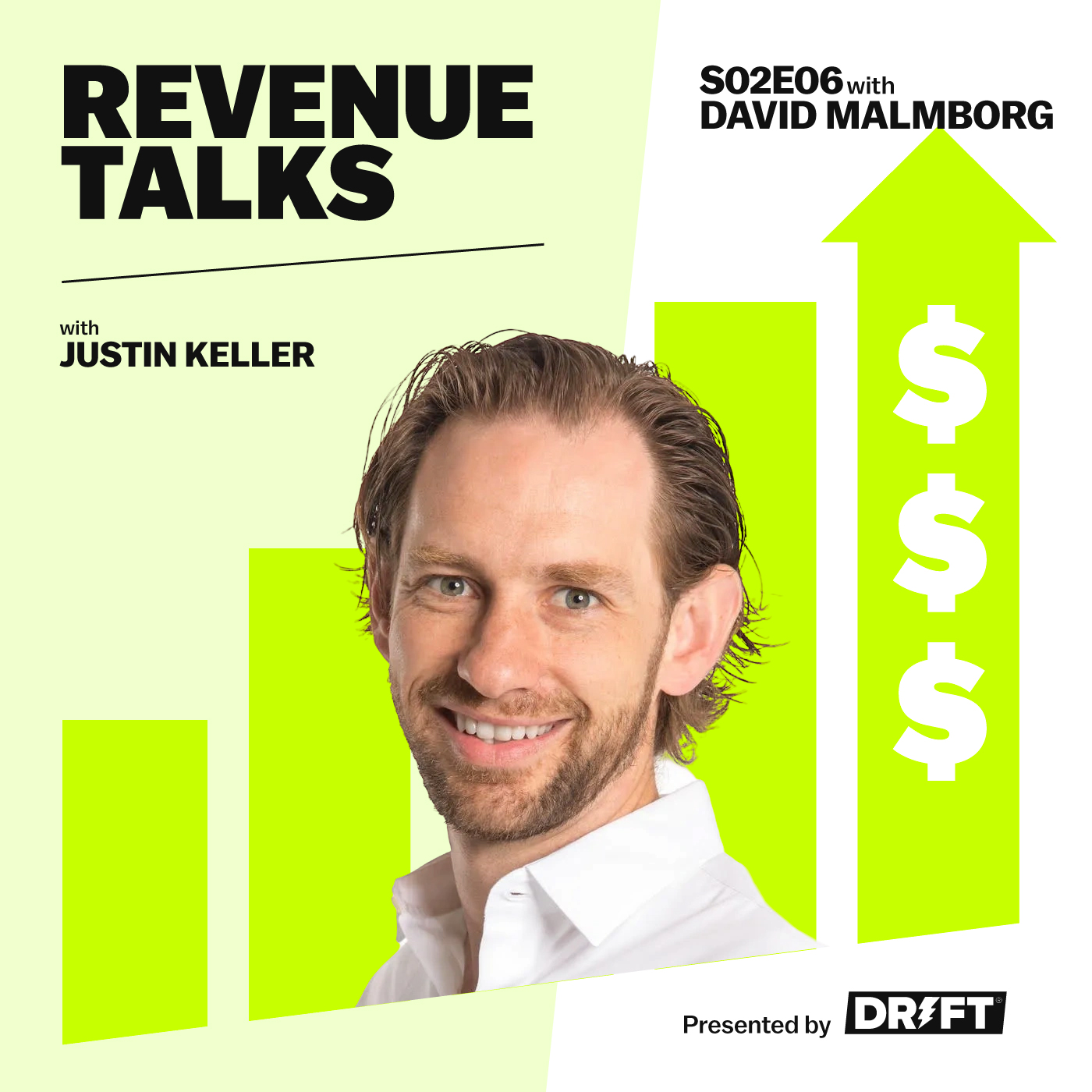Global Personalization at Scale | Janet Jaiswal
- 0.5
- 1
- 1.25
- 1.5
- 1.75
- 2
Justin Keller: Welcome to Revenue Talks, to show where we get real about what it takes to build pipeline and drive expansion as a go-to- market team. I'm Justin Keller, the Vice President of Revenue Marketing at Drift. And on this show, I'm here talking to folks across the entire go- to- market organization, which means marketing, sales, and customer success, about how these conversations, technology and cross- functional alignment to build more pipeline and drive expansion. Because revenue, it's everyone's business now. Hello everybody, it's Justin. Welcome back to another episode of Revenue Talks. I am very excited to be welcoming Janet Jaiswal to the show today. Janet's the VP of Global marketing at Cloudbeds, which is a, as you might guess, cloud- based hospitality platform that helps hotels and other vacation spots grow their revenue and create fantastic guest experiences. Janet is passionate about personalization at scale, as she needs to be, as she manages a global team. And personalization is something I'm personally very passionate about as well. So I'm very excited to dig in with it. And if you've ever run a one- to- one campaign, if you've been part of one, they drive outrageous engagement, but doing it at scale and having that same kind of experience is so hard to scale. So I cannot wait to learn from Janet. Janet, welcome to the show.
Janet Jaiswal: Thank you. Excited to be here.
Justin Keller: So before we get into all things go- to- market, I was listening to another podcast you were on just to make sure I knew what I was getting into, and mentioned that you traveled half the world. And seeing as you pedal in hotels every day and the fact that I could probably use some recommendations for vacation. I want to start off with some fun stuff. Do you have a favorite vacation spot?
Janet Jaiswal: Well, I've been lucky enough to travel at least half of the world and there are many, many countries on my bucket list. So despite traveling far and wide, my favorite is a local one. It's Alaska, specifically an Alaska cruise tour. I spent think it was seven days traveling around cities like Skagway, Ketchikan, Juneau, and then doing those glass top trains that went into a bunch of lodges. And the reason why I enjoyed it so much is not just because of the natural beauty, but we saw bald eagles, we saw moose, we saw bears and so forth. So sorry to say, it's a local place.
Justin Keller: Hey, local's relative, right? If you're listening from Florida, Alaska may not be that local to you, but I could not agree with you more. I just earlier this year, took a train through the Canadian Rockies with one of the same kind of glass top thing and it was just stunning. I have never wanted to not check my phone so much, because I was just glued to the window. It was amazing. And so, I understand and I'm also, I am a huge foodie, I understand you are as well. And I would hazard a guess that Alaska may not be the best food spot you've ever been to. So if we're talking about food, where would you head?
Janet Jaiswal: I think the best food I've had, it has to be in Bangkok. So I took a tour of Bangkok and Cambodia. I have to say that the food was so fresh, so authentic, every dish was amazing and personally, to this day, I'm still struggling to get my green curry with chicken down. So it's as good as I remember it was. But I remember one thing that struck me is that at every restaurant that we went to, everybody had their own version of a Tom Yum Soup. It's a recipe that they claimed was handed down for generations and they have some secret ingredient that none of us knew. Anyway, that was something that was new. And for those that don't know Tom Yum Soup is, it's a hot and sour soup, it's broth based and it has things like lemon grass and kaffir lime leaves and shrimp and so forth. But I never had it before, I tried it and really, really enjoyed it. So that has to be by far my favorite cuisine and probably the best place where I've had the food. Everything's fresh, everything's amazing.
Justin Keller: I could not agree more. I think I'm going to start a travel podcast on the side and have you back, because I would agree, Bangkok is the best food I've had as well. We should probably talk about revenue though. I'd sit here and talk about traveling with you all day, but the name of the show is not Travel Talks. So before we get too deep into it, if you don't mind setting the stage for us, give us a quick elevator pitch, no pun intended about Cloudbeds.
Janet Jaiswal: Sure. So Cloudbeds, it's a global hospitality management platform software provider. So we're a vertical, we only focus on the logging industry and what we provide is the ability to manage your front office, your back office, all in one platform. And what's different about us is that it's one platform, one login, everything's in sync. Whereas historically in the logging industry, hoteliers typically have dozens of products that they are integrating on the back end and they're trying to make it all work and provide this great work experience and this great customer experience if you will. But in reality it's pretty hard, because there are so many disparate solutions. So we aim to solve that which is, one platform that's intuitive and easy to use, because as you can imagine, especially in the travel industry, there's a lot of turnover. People work at a hotel and six months later they're like, " Yeah, I'm going off to college", or, " I don't want to do this." And so, you have all this turnover, which means if you're spending time training them on this legacy software that takes the user manuals as thick as a phone book and you've trained them and then they leave, oh my god, now you have to start all over. And so, we aim to solve that problem and make it easy and intuitive and get people up and running as quickly as possible, but also provide an awesome customer experience, because every property is unique, everybody wants to have this great experience.
Justin Keller: That's great. And I'm interested to hear, because you're verticalized, I imagine... The topic we're here to talk about today is personalization. And the reason it's so important is because we live in such a noisy world. And I'm curious, does being verticalized make personalization any easier or are the challenges the same regardless?
Janet Jaiswal: The challenges are the same regardless. In the hospitality industry, people are used to service, they're used to that level of personalization. So if anything, because of the industry we're in, the expectations are even higher. Because they're used to giving that to their customers and they're like, " Well why can't I get the same?" And we're like, " You should get the same, but we're in more than 150 countries so it's not that easy." So that's the challenge that we face every day and we try to solve.
Justin Keller: Yeah. I think I was going to ask that, because you do, you always have to... I market to marketers and I feel like we always have to be living up to their standards and the same has to be even more true for you in creating that very personalized, Ritz Carlton level experience for your customers. And so, you've talked about in accomplishing this, thinking short- term and long- term about this personalization strategy. First of all, how do you define the difference between short- term and long- term? Because those can get so blurry, the difference between the two, and how do put a guardrail between the two, or do you? Do they flow into one another?
Janet Jaiswal: It does flow into one another and you can't do one discretely and then the other one like, " Oh, today we're doing only short- term and then long- term." But I do think that you have to keep an eye on both. So let me start with defining short- term. Short- term is performing all the activities that bring results right away. It's activities like generating leads, because we all have revenue goals to hit. And short- term would also include all of the activities to generate those leads. So whether that's content, that's inbound, outbound, paid ads, campaigns, all of that work. Long- term to me, is more difficult and it requires an investment that doesn't pay off immediately. So it requires courage of conviction. A marketer has to know that these are things that are worth doing. They're not going to give you that immediate payoff, but they're very important. And that's where being in alignment with your CEO helps, because without that you can't make those investments if you're only being judged on cost per lead, leads per month and so forth. And long- term involves investing in the customer experience, all the programs that go to improving that experience end- to- end. And it doesn't mean just customers after they sign the contract, it's prospects as well. Long- term are things like branding, it's maturing product marketing for example. So product marketing has a lot of different activities, but a lot of product marketing activities you can't measure right away in terms of dollars. So it's more than just product launches and sales enablement, it's thought leadership, which again takes a while to mature before you can show it. It's also investing in SEO. SEO is another thing which is, you're not going to see results right away, but you have to know that it will pay off. And those things, all of those long term investments help, because that is what is going to feed us for the long- term. Whereas in the short- term, we're buying ourselves time to make sure that we build that world class marketing function.
Justin Keller: Like you said, the courage of conviction. And that is something that I think is the sign of a marketing leader. When you move on from the near- term metrics and KPIs and you're able to think in the broader picture, you have to be bold and brave and it's so difficult, because you're absolutely right, you need to do what's right for the company and there's no shortcuts in that. And juxtapose that with the average tenure of a CMO or marketing leader, it's getting shorter and shorter and when you talk to CEOs it's like, " Guys, where are you thinking?" You need to make, I think this is maybe a lesson for the CEO's listening, you need to make long- term bets on your marketing leaders and believe in them, and then look at the short- term, but keep the long- term in mind. Let's talk about, what does personalization mean to Cloudbeds? When we say personalization, how does that show up in your marketing programs?
Janet Jaiswal: So first, let's define what we believe is personalization. So for us, personalization could be by region, by country, it could be by property size, it could be by the property type, a hotel versus a BNB for example. It could be by the roles that buy our software, it could be by language. And so for us, we see personalization as a journey. We're not going to get there overnight, but at the beginning it was one email for all prospects. Okay, it's a start. Now it's by language, now it's by role and now it's by property size. Are we there yet? No, we have property type, we have country specific, or maybe we'll start with the region and then eventually we'll get to country by country. Because again, more than 150 countries is a little difficult. And so for us, it's going phase by phase realizing that we'll never get there. But eventually we want to be as local and as relevant as possible. That ultimately is what converts. Whether that's the website, whether that's the email, whether that's the paid ads, whatever that is. And so, incorporating that level of personalization in all of our communication is incredibly difficult, because again, you've got the short term pressure of I've got to produce leads. And personalization isn't something that necessarily pays off right away, because it requires a heavy infrastructure into identifying what you need to capture, capturing that data, and then leveraging technology and people to be able to then take advantage of that data.
Justin Keller: You nailed it. Companies start off with one email that goes to everyone, and then you decide to get a little more segmented. And I think smart marketers continue to chunk up segments little by little until you've got nice little pockets. And there's some overlap in segments of course. But I think one of the great benefits of that is, as you start to build out these segments and you start to launch these personalized programs, you start to create a feedback loop so that you know which segments perform well on what message and that even that helps your product team, that helps your C- Suite, that helps your roadmap. And I think that's one of those things, of course personalization's so important for the customer experience, but it is also the secret weapon in helping you become a sharper marketer with your business.
Janet Jaiswal: Yes. It definitely forces us to make sure we've done our homework right?
Justin Keller: Yes.
Janet Jaiswal: We're not making assumptions of what we think our buyers want. We have to be very, very clear. Otherwise, you can't personalize at that level. And so, it's a good way to make sure that you've covered the basics and you've done your planning ahead of time. Very much inaudible.
Justin Keller: And for you it's got to be... So we're talking about property sizes or business sizes, we're talking about geographies, we're talking about property types, we're talking about personas. That's just a wild array of segments and there's got to be some overlap in that. When you think about content and we talk about content broadly, it could be what you enable your sales team with. It could be what's your top of funnel content you're putting out into the marketplace. How do you approach that in a way that you can start to scale that out?
Janet Jaiswal: Another thing that you didn't add is language.
Justin Keller: And language. Yes, and language.
Janet Jaiswal: So think about how much longer it takes now to send out one email, because you have to translate all of that and then every piece of content you put out has to be translated. So it does require having a very good foundation, technology, people and then process, in order to be able to do all of that. So the way I see it is, it's a journey. It is not something that we have to get there overnight. So for us, depending on where that marketing function is in terms of its maturity, you hit the low hanging fruit first. So where I draw the line is, if the demand gen function is generating somewhere between 35 to 50% of the total revenue, meaning the leads that we produce bring us that much revenue, then I feel like, " Okay, I've given myself some permission to be able to invest further into the long- term strategy as opposed to the short- term." If I haven't at least hit at least 35, ideally at least 50%, if the revenue that we're generating isn't that much, I need to invest more in short- term. And so, I use that as a way to balance how much of the time should we spend on short- term versus long- term. We're always spending time on both. One just takes longer to prove out. And so, we're constantly running experiments to be able to personalize. So I'll give you an example, in demand gen, so we're B2B, very different, different than B2C. We know which sources produce leads for us. So we're constantly doing that, but we're always investing a little bit into the longer term, which is trying out new channels that aren't producing today. But we know over time we will get it right. We will figure out how to crack that code if you will. And so, one example is about a year ago we invested in social marketing. So we went after YouTube and Facebook, because we saw a chunk of our audience there. We weren't good at it. It's normal for B2C, but for B2B, those aren't the first challenges you think about. But we experimented, we invested, and now it's easily one of the top five sources of leads. And so, that's where you bet on small experiments while we're trying to get to the holy grail. So we're constantly experimenting and testing and investing, because in the beginning when you're trying something new you're not going to be efficient. So we spent a lot of money in that area, but now it's optimized such that the cost per lead has dropped, whereas earlier it wasn't.
Justin Keller: Yeah. We talked a lot about long- term. You've talked about thinking about things as a journey and we've talked a lot about acquisition, but you were also scaling personalization out across the post- sales experience too, aren't you?
Janet Jaiswal: Yes.
Justin Keller: That's got to be so tough. You have to stay laser focused on top of funnel and driving pipeline and leads. But hospitality being what it is, it's a little bit of a tumultuous industry. And so, that post- sale experience has to be really important as well. How do you balance those two things?
Janet Jaiswal: So that's where content marketing and product marketing comes in to play, as well as the customer advocacy team, which is what we're calling it internally. You know that old saying, " It costs a lot less to keep a customer, than it is to go acquire." We have to pay attention to that. We have to pay attention to that customer experience and keeping them, because we rely on cross sell and upsell as much as anyone else does to make sure that we've earned the right to sell to them, to sell more to them. And so, one of the things that we do is, we make sure that we pay attention to that unboxing experience. Even if it's software. What's that initial impression that customers get when they first join? And again because we're in hospitality, people are used to service. Service is above everything. And so, the support we provide is not as automated, it's people based, because of the industry that we're in. So we invest in the onboarding experience in getting the data pushed over from one platform to another or just getting them up and running. We provide a lot of educational content. We constantly measure CSAT and NPS. And to do all of that we have to map out all of the touch points and it's painful and it takes a long time. But we very much believe that, if we take care of them and we add value to the conversation. So our content, we try very hard not to make it salesy. We try very hard to educate them, teach them something new, because if we've taught them something new, we've then earned the right to send a campaign and say, " Hey we have this new product, do you want to try it?" But we don't do that from the beginning and just take it for granted that they're just going to keep buying it forever. That just doesn't happen unfortunately. So we do invest quite a bit in improving the customer experience, and then continuing to make sure that they are incorporated in our thoughts and in our marketing efforts. So we're not quite 50/ 50, but we're trying to balance out as much as possible and make sure we don't forget about the customers just because they bought and we have to move on to the next target.
Justin Keller: Yeah, that's such a good reminder too. And I love that you mentioned the unboxing experience. Everyone thinks of it as a B2C, fun YouTube thing. It is absolutely 100% a B2B thing too. That first moment where you're officially a customer is such a critical part in a customer's journey. If you're listening to this, take a moment, pause this podcast. If you're the marketer, ping someone. If you're the CEO, remind your marketer that unboxing experience is so important.
Audio: You are listening to one B2B professionals take on what it takes to accelerate revenue in 2023. But did you ever wonder what 600 other B2B professionals think about it? Drift partnered with Heinz Marketing to survey B2B professionals and get their take on the impact of conversational marketing, conversational sales, and conversational support on business outcomes and buyer experiences. Learn why nine out of 10 respondents agree that conversational solutions are valuable for creating an all around better experience for both customers and businesses by clicking the link in the show notes.
Justin Keller: So global customers, global company, global marketing team, I'm imagining global sales team as well, right?
Janet Jaiswal: Yes.
Justin Keller: Acknowledging the myriad challenges in scaling global personalization, the sales team, the customer facing people are also such a critical part of that. How do you go about enabling a global sales team or a field team like that so that all the stories you're telling to all these specific audiences line up with such a distributed team?
Janet Jaiswal: We very much believe in being as local as possible. Again, maybe more unique to our industry, they don't want to hear that, " Oh this company's based in the United States." If they're in Spain or Portugal or Indonesia, they're like, " Yeah, that's nice, but do you have some local presence here?" So it does pose challenges in that, one, our team is distributed. So when we do sales enablement, and you have to talk about this is the value prop for this product. Well, some countries use a product differently or they don't care as much about one value prop versus another. And so, it has to be localized. And that's where we rely very heavily on our customer success team and our sales team to bring that local knowledge, because the marketing team is smaller than the sales team, no surprise. And so, we don't have a marketer that's in every country that we need. And so, we get the local knowledge from the people that are there, feet on the street if you will. So that knowledge is then incorporated such that, when we do a campaign, yes, it's in their language. And again, we don't have all languages. We're getting there, but it's also relevant to them. Even competitive takeouts, the competitors vary from country to country. The alternatives vary from country to country. And so, it does take more time. Anytime we roll out something, we have to make sure, is it relevant for this country? Because otherwise, you're going to have sales people saying, " Oh this doesn't work." It's like, " Well it worked in Canada, what do you mean it doesn't work?" " Well, we're in Australia, it doesn't work." So it does take longer. It requires much more planning and a lot more process. But when we do it right, we see it, we definitely see, we can see the results. So not easy, but worthwhile.
Justin Keller: And I feel like every sentence you say, it dawns on me how difficult your job is. Every time you mention something, I'm like, " Oh, I didn't even think about that dynamic. Oh my god." There's competitors in other countries that you have to compete with on a regional level. And I imagine when you're considering so many dynamics, so many opposing forces, there's got to be a core set of, I don't know if it's values or the mission, but what holds everything together? There's got to be one central focus that, from which everything springs, or am I wrong? Are you very nimble and you adapt constantly?
Janet Jaiswal: We can't be all things to everyone. And so, there are the core value props of the product that resonates across, but maybe how it's conveyed or what is emphasized will vary depending on that country. So I'll give you a very simple example. When we're marketing, for example, so say we're marketing in Brazil versus maybe the US. Because US is unique in a lot of different ways. In Brazil, they don't open emails a lot. So we have very low open rates and click- through rates, because they're not as digital if you will. But if you send that same message in WhatsApp, you will get an instant reply and you can send five emails and you're like, " Come on, just open it." So what we've come to realize is that, even the method of communication, not just the words we use, are different from country to country. And that's one example. In Mexico for example, when we do small group events, everyone shows up, because they're social, they want to be with people. The human relation is much more important to getting business done. Whereas in the US, you can send them emails or you could do a small group event and they may not show up. They're like, " Yeah, traffic is bad." Or maybe you'll get a 50% show up rate in the US, and in Mexico you'll get 80 to 90% show up rate. So there are a lot of tactics we've learned and there are a lot of different ways, culturally speaking, that makes a difference in how you do marketing. It has to be adjusted to that country. Now you can't do everything. So there's still a core set of product value props that still makes sense. The message still makes sense, but you have to be careful when you translate it. It better makes sense and it won't be something funny. Like inaudible no va. No va means doesn't go, in Spanish. And you have to think about those kinds of things. So we don't always get it right, but we do try to incorporate all of that thinking before we go out, at least for a big campaign, because we want to get it right if we can.
Justin Keller: The number of intricacies that you and your team have to run into every day is absolutely mind boggling. I'm very impressed and I'm honestly a little humble just to be thinking about those things, because I deal primarily with North American, Western Europe, APAC marketers generally works the same. For the most part, we add an extra val every here and there if we're sending something to Europe, but nothing near the amount of complexity that you have. So I am genuinely impressed. This is very cool. We are getting close to the end here. So Janet, we've got the Signature Revenue Talks question coming up and that question is something we ask every guest that we have. And that's, what is the number one thing that your team is focused on to accelerate revenue in the second half of this year?
Janet Jaiswal: With the changes in market, and in our case with COVID and everything, we are really focusing on retention as a strategy to grow revenue further. We have thousands of customers around the world. So what we do is, we are paying a lot more attention to customer marketing and focusing on turning more customers into advocates. So even if the customer success department sits, it is not part of the marketing team, we collaborate very closely and it doesn't mean that marketing can't play a strong role in that. And so, we are measuring CSAT, we are spending more time on incorporating the customer feedback into the products, into the marketing. Some of the ways we do it is a customer advisory board. So that's the formal set of people that rotate from time to time, but they provide us feedback on what they like, what they don't, the good, bad and ugly. We're incorporating customers when we run betas. Before a product is launched, we do a beta. And so, we make sure that we incorporate their feedback. We are constantly talking to our customers to figure out, how can we help you better? And then we adjust our content according to that. We are focusing on getting more referrals and testimonials and case studies and all of that stuff. And so, we are beefing up our capabilities and the resources and time around customer marketing efforts. And we never, ever forget that we have to give to get. Just because they're a customer doesn't mean we can automatically go tell them about this new shiny, cool toy that we're launching. We have to earn the right by adding value first, before we can go cross- sell and upsell to them. And so, that's what we're focusing on this half of the year is that, we're feeling pretty good in terms of making sure that we've hit the short- term goals. We have a very good demand gen machine that's working. Now we have to squeeze more juice out of all of the leads that we have. So it's all about customer marketing and conversion, conversion, conversion. Great to get all these leads, but we want more of those to convert to customers. And so, a lot of the not so sexy stuff, but it's worthwhile. And we do expect that it'll pay dividends over time.
Justin Keller: I think those are such good parting words too. Just a good reminder that you have to give to get. And it's easy to get jaded as a marketer and just focus on short- term things, but your perspective on long- term is a breath of fresh air. Everybody, look forward to my new podcast, Travel Talks, where Janet Jaiswal will be my first guest. But for now, it has been wonderful having you on Revenue Talks. Thank you so much. It's been a pleasure.
Janet Jaiswal: You're welcome. That was fun.
Justin Keller: Thank you so much for listening to Revenue Talks. If you liked this episode, please consider leaving a review wherever you're listening. You can connect with me on Twitter @ justinkeller and the entire Drift Podcast Network at @ DriftPodcasts. Remember, revenue, it's everyone's business now.
DESCRIPTION
Janet Jaiswal (VP of Global Marketing at Cloudbeds) doesn't believe personalization can happen overnight. Instead, she encourages her team to look at it as a journey.
In this episode of Revenue Talks, Janet talks to Justin about what that journey looks like. The two marketing leaders question whether verticalization makes personalization easier or harder, discuss how Janet balances top-of-funnel content with bottom-of-funnel content, and Janet shares her tips for trying to span marketing messages globally.
As a bonus, you'll hear Janet's favorite travel and food destinations (spoiler: they're not the same place).
Talking Points:
- (1:45) Janet’s favorite vacation spot
- (3:15) Janet’s favorite food destination
- (4:49) The Cloudbeds elevator pitch
- (6:48) Does verticalization make personalization easier?
- (8:00) How Janet defines a short-term vs. long-term personalization strategy
- (11:08) How personalization shows up in Cloudbed’s marketing programs
- (14:22) Janet’s approach to scaling content
- (17:41) How Janet thinks about balancing top-of-funnel personalization with bottom-of-funnel personalization
- (22:36) Enabling a global sales team to all tell the same story
- (24:12) What centralizes all of Cloudbeds’ marketing team’s work
- (27:20) The #1 thing Janet’s team is focused on to accelerate revenue for Cloudbeds this year
Like this episode? Leave a review!
Read how other go-to-market leaders are strategizing their year: https://drift.ly/stateofconversations
See who Drift's other Marketers to Watch are: https://drift.ly/MarketerstoWatch
Today's Host
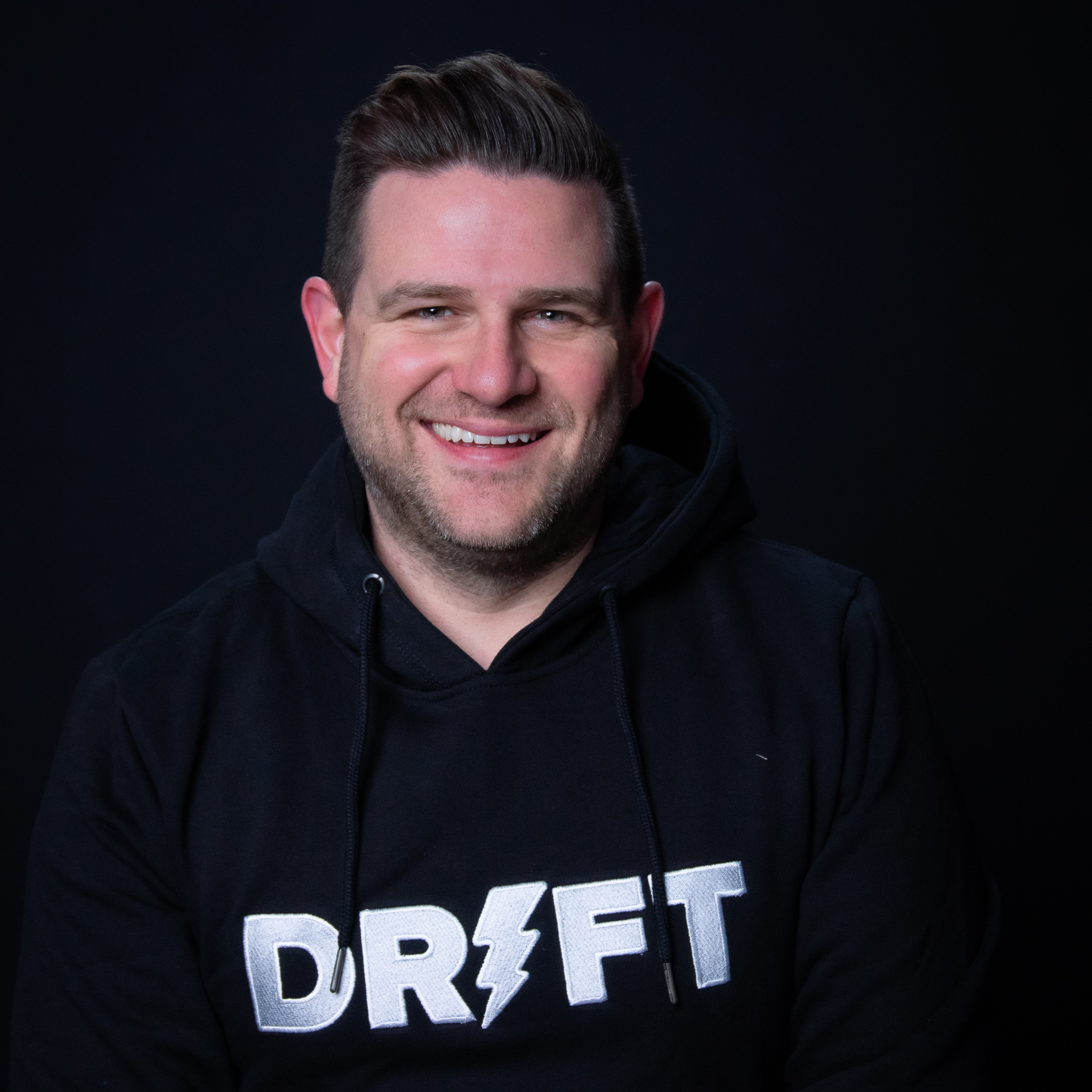
Justin Keller
Today's Guests

